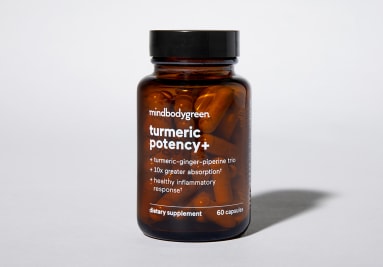
Image by BONNINSTUDIO / Stocksy
June 2, 2023
Whether it’s a high-intensity workout on a hot day, an uncomfortable medical procedure, or a daily cold plunge, we all have to push through pain and discomfort from time to time. And while we may think of pain tolerance as inborn and unchanging, new research shows that’s not the case.
Researchers in Norway examined the connection between physical activity and pain tolerance and found that lifestyle factors may have more to do with pain than we thought. Their findings have huge implications for those struggling with chronic pain and anyone who wants to build their resilience.
Advertisement
This ad is displayed using third party content and we do not control its accessibility features.
Can exercise increase pain tolerance?
Published in the latest version of PLoS ONE, this study1 was performed on a group of more than 10,000 adults in Norway from the University Hospital in Tromsø.The researchers had the participants self-report their activity levels and then measured their pain tolerance.
How’d they do that? Each participant submerged their hand in freezing cold ice water and then ranked their pain on a scale. Researchers measured pain tolerance two times across eight years.
In the end, participants that reported a more active lifestyle ranked the pain of the icy water lower. More frequent exercisers were also able to keep their hand in the water for about 20 seconds longer than the mostly sedentary group.
There was a dose-response trend too, which means the more often they exercised, the more this resilience to pain grew. Interestingly, participants who increased their activity level over the eight-year study period also showed increased tolerance to pain over time.
RELATED: The Best Workouts For Longevity & How Often To Do Them, From An MD
Implications for chronic pain
This study suggests that exercise may be a helpful strategy for managing chronic pain. Recent statistics show that in 2021 alone, about 20.9%2 of U.S. adults (more than 50 million people) experienced some type of chronic pain. Unfortunately, existing treatments can be dangerous, addictive, and not even that effective3 for chronic pain.
This study showed that both light and high-intensity exercise is associated with higher pain tolerance. So you don’t have to suffer through CrossFit every day or train for a marathon to see benefits.
This study does have some limitations, like the fact that activity level was self-reported by participants and not measured objectively by researchers.
Advertisement
This ad is displayed using third party content and we do not control its accessibility features.
Alternative methods for chronic pain
Since the existing conventional treatments for chronic pain can leave many people feeling frustrated and without relief, chronic pain is a big topic in functional and alternative medicine. And while taking pain is extremely complicated and difficult, there are some lifestyle factors that show a lot of promise, especially for chronic pain.
Exercise
As we learned here today, exercise is one of the best things to do if you have chronic pain. You can try something low-intensity like walking or stretching.
Advertisement
This ad is displayed using third party content and we do not control its accessibility features.
Turmeric
The main compound in turmeric root, called curcumin, is a superstar ingredients. It has a long, long list of benefits (here are eight benefits of turmeric to read up on!), but one of the best studied is for chronic pain.
One systematic review showed that 10 out of 10 of the studies4 analyzed showed that turmeric was nearly as helpful for chronic pain as NSAIDs.
Want to try turmeric for yourself but don’t know where to start? Fear not, we’ve done the legwork for you. Check out the 14 best turmeric supplements on the market, all vetted by a nutrition Ph.D.
Advertisement
This ad is displayed using third party content and we do not control its accessibility features.
Mindfulness
It’s a strange thing to think about since when we’re in pain it really feels like the exact area in our body is in pain, but pain is actually constructed entirely in our brain.
That doesn’t make it less real, but it does suggest that practices that later affect the brain may influence pain, which may be why Harvard Scientists recommend mindfulness practices like body scans for chronic pain.
Acupuncture
Acupuncture is one of those modalities that seem to be able to help with all aspects of health, and pain is no different. Studies suggest 5acupuncture may modestly help with low-back pain, headaches, migraine prevention, and myofascial pain.
Advertisement
This ad is displayed using third party content and we do not control its accessibility features.
The takeaway
A new study showed that regular exercise can make you more tolerant to pain, which had big implications for the millions of people struggling with chronic pain. There’s still a lot more we need to learn about chronic pain, but this is a step in the right direction, and there are a handful of existing alternative treatments that show promise. Feeling inspired to double down on your exercise routine? Check out our guide to strength training.


